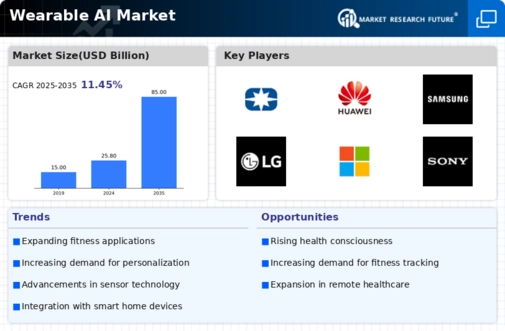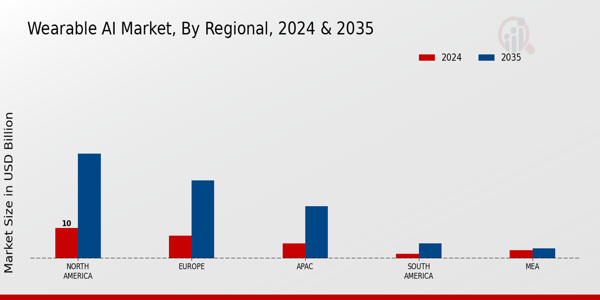Wearable AI Market Summary
As per Market Research Future Analysis, the Wearable AI Market is poised for significant growth, driven by advancements in technology and increasing consumer demand for health monitoring solutions. The market size was estimated at 74.30 USD Billion in 2024 and is projected to reach 417.94 USD Billion by 2035, with a CAGR of 17.00% from 2025 to 2035. Key drivers include the integration of AI in wearable devices, rising health consciousness, and the growing adoption of remote patient monitoring systems.
Key Market Trends & Highlights
The Wearable AI Market is characterized by several key trends and highlights.
- Healthcare segment expected to generate revenues of approximately 8.5 USD Billion in 2024, growing to 30.0 USD Billion by 2035.
- Fitness and Wellness segment projected to escalate from 7.0 USD Billion in 2024 to 25.0 USD Billion by 2035.
- North America to hold a significant market position with a valuation of 10 USD Billion in 2024, expanding to 34.2 USD Billion by 2035.
- Telehealth utilization increased by over 154% in 2020, indicating a shift towards remote health management solutions.
Market Size & Forecast
| 2024 Market Size | USD 74.30 Billion |
| 2035 Market Size | USD 417.94 Billion |
| CAGR (2025-2035) | 17.00% |
Major Players
Key companies include Huawei, Google, Apple, Polar, Amazfit, Microsoft, Lenovo, Samsung Electronics, Garmin, Withings, Oura Health, Whoop, Sony, Xiaomi, and Fitbit.























